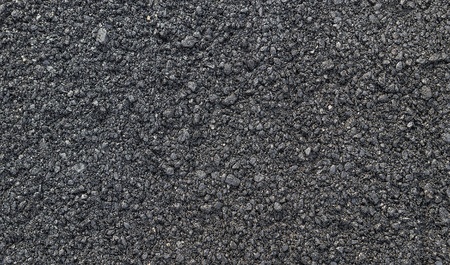Hot Mix Asphalt: The Foundation for Safe and Secure Angled Parking Lots
Hot Mix Asphalt: The Foundation for Safe and Secure Angled Parking Lots
Blog Article
Opening the Tricks of Warm Mix Asphalt Technology
Checking out the depths of hot mix asphalt technology uncovers a world where meticulous procedures and specific solutions merge to form our roadways and facilities. The combination of aggregates, binders, and fillers isn't merely a construction task yet a critical orchestration of longevity and performance. As we peer right into the complex dance of components, a tapestry of resilience and sustainability unravels. What lies under this surface area of asphaltic mastery, and what secrets wait to be unveiled in the realm of leading technologies?
Value of Warm Mix Asphalt
Hot Mix Asphalt plays a crucial function in modern facilities growth because of its longevity and cost-effectiveness. As the most generally used leading product for roads, highways, and parking area, Warm Mix Asphalt offers a variety of advantages that add to its significance in building and construction projects. One essential benefit is its capacity to endure rush hour loads and severe climate problems, providing a lasting and trusted surface area for transport networks. In Addition, Hot Mix Asphalt is affordable in both preliminary building and lasting upkeep, making it a recommended choice for numerous facilities jobs.
The longevity of Warm Mix Asphalt stems from its composition, which consists of aggregates, binder, and filler products that are carefully chosen and mixed to meet particular efficiency demands. In general, the relevance of Hot Mix Asphalt in framework advancement can not be understated, as it proceeds to be a cornerstone of contemporary construction methods.
Components of Asphalt Mixes
The structure of asphalt blends includes meticulously chosen accumulations, binder, and filler materials that are critical for accomplishing details performance demands. Accumulations are the main part of asphalt mixes, offering toughness and stability. These aggregates can be all-natural, such as gravel or crushed rock, or artificial, like recycled materials from old pavements. The binder, commonly bitumen or asphalt cement, holds the accumulations with each other and offers versatility and durability to the mix. The selection of the binder is vital as it straight influences the mix's performance in different climate condition. Fillers, such as hydrated lime or Portland cement, are utilized to boost the mix's workability and aging resistance. Angled Parking.
The mix and percentage of these parts play a substantial role in determining the quality and performance of the asphalt mix. Engineers carefully design the mix to meet specific requirements, considering factors like traffic quantity, environment problems, and pavement life expectancy. Proper selection and harmonizing of accumulations, binder, and fillers are crucial for developing sturdy, long-lasting asphalt sidewalks.
Combining and Manufacturing Methods

When the original source the aggregates are chosen, the binder, typically asphalt cement, is included in bind the materials together. The binder's quality and quantity considerably affect the mix's flexibility, resistance, and stamina to ecological elements. Additionally, fillers like moisturized lime or Portland cement might be integrated to enhance particular qualities of the asphalt mix, such as its workability or moisture resistance.
During production, the accumulations and binder are warmed, commonly in between 250-325 ° F(121-163 ° C ), to assist in mixing and ensure correct finishing of the aggregates. The blending process must be thorough to attain a homogeneous mixture that advertises the preferred efficiency attributes of the asphalt. Different strategies, such as set mixing or drum blending, are employed to attain high-grade and constant asphalt blends for building and construction jobs.
Variables Impacting Asphalt Efficiency
Elements affecting asphalt efficiency encompass a variety of variables that influence the durability, durability, and general top quality of asphalt pavements. One essential aspect is the top quality of materials used in the asphalt mix.
Ecological conditions likewise affect asphalt performance. Temperature level variants, wetness seepage, and traffic tons can all influence the structural stability of the sidewalk. Design considerations, such as sidewalk density and drainage, are necessary in ensuring the long-lasting efficiency of the asphalt sidewalk. By thoroughly thinking about these designers, variables and contractors can maximize asphalt efficiency and boost the solution life of sidewalks.
Sustainable Practices in Asphalt Technology
WMA enables for the manufacturing and placement of asphalt mixes at reduced temperatures contrasted to typical hot-mix asphalt, resulting in decreased power usage and greenhouse gas exhausts. The use of porous asphalt blends can aid reduce stormwater overflow concerns by allowing water to infiltrate via the sidewalk and into the ground, promoting natural water purification and reenergize processes.
Final Thought
In conclusion, hot mix asphalt innovation plays a vital duty in modern-day framework growth as a result of its resilience and cost-effectiveness. By thoroughly balancing elements, utilizing proper mixing techniques, and considering various factors, designers can develop high-grade asphalt blends that stand up to hefty web traffic tons and severe climate condition. Embracing lasting methods, such as utilizing warm-mix technologies and recycled products, additionally improves the environmental kindness of asphalt modern technology.
Mixing and manufacturing strategies in hot mix asphalt technology Visit This Link entail the specific mix and processing of accumulations, binder, and fillers to produce a durable and high-performance asphalt mix.Elements affecting asphalt performance include an array of variables that impact the toughness, durability, and total top quality of asphalt sidewalks. Sustainable techniques in asphalt innovation encompass numerous initiatives intended at decreasing the ecological effect of asphalt manufacturing and paving processes. By including recovered asphalt sidewalk (RAP) and recycled asphalt roof shingles (RAS) right into new asphalt blends, the industry can dramatically decrease the intake of raw materials and power, while also reducing land fill waste.
WMA enables for the manufacturing and placement of asphalt mixes at reduced temperatures compared to typical hot-mix asphalt, resulting in decreased power consumption and greenhouse gas discharges.
Report this page